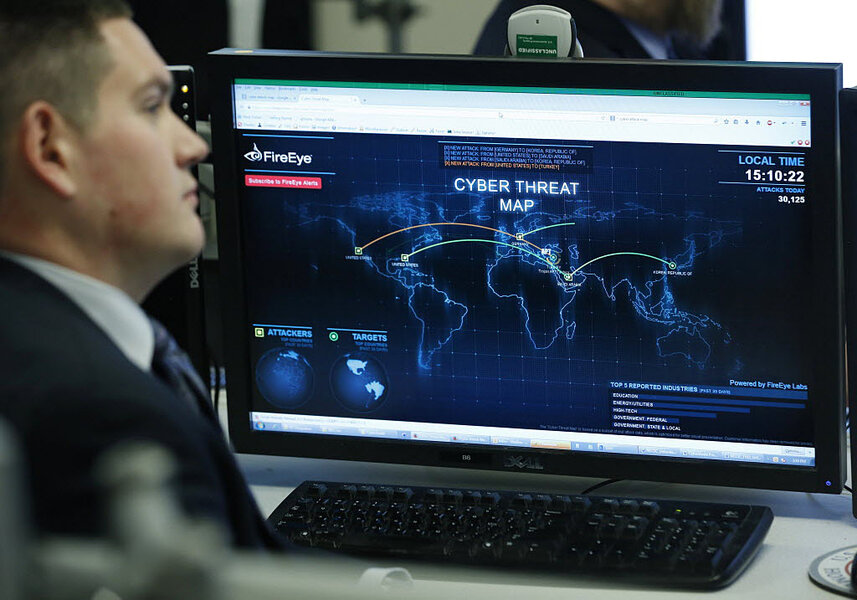White House launches new cyber security center: Will businesses cooperate?
Loading...
A recent string of cyberattacks has served as a wakeup call for the Obama administration: The United States government needed a centralized body responsible for coordinating the country's cybersecurity response.
On Tuesday, the administration announced the creation of the Cyber Threat Intelligence Integration Center (CTIIC). The agency is modeled on the National Counterterrorism Center, which was created after 9/11 to be a central point of coordination for terror intelligence.
America's cyber capabilities are spread among the National Security Agency, the Department of Homeland Security, the Federal Bureau of Investigation, Central Intelligence Agency, and the Pentagon's Cyber Command. The CTIIC aims to connect the agencies’ capabilities and create a center to pool data on cyber breaches.
The Obama administration wants to make sure “there’s one belly button for the entire US government,” said Shawn Henry, president of CrowdStrike cybersecurity agency, on the CBS “This Morning.”
In recent years, cyberthreats have become more frequent and sophisticated. In 2012 Iranian hackers carried out several disruptive computer attacks against US banks and other companies, including JPMorgan Chase and Bank of America. In October 2014, hackers allegedly working for the Russian government breached computer networks in the White House, albeit without gaining access to classified networks. And recent attacks against companies such as Anthem Inc. health insurance and Target Corp. shed light on the vulnerability of sensitive consumer data.
But the cyberattack against Sony Pictures Entertainment, attributed by the White House to North Korean hackers, was a "game changer," said Lisa Monaco, President Obama’s homeland security and counterterrorism adviser, on Tuesday.
The hack resulted in the exposure of sensitive e-mails and wiped computers clean of data. It also marked the first time the United States openly laid blame for a cyberattack on a foreign government.
Officials from both sides of the aisle are now supporting the initiative to streamline the government’s cybersecurity capabilities.
“Anything that can be done to improve coordination within the federal government will help to better protect our nation from cyber breaches,” said Rep. Michael McCaul (R) of Texas, who chairs the House Committee on Homeland Security, to The Wall Street Journal.
The CTIIC, however, faces the same problem that previous government cybersecurity ventures have faced: convincing private companies to participate by sharing information.
Following the 2013 leaks by former NSA contractor Edward Snowden, many big tech companies lost trust in the government. Businesses in other sectors of the economy have been wary of government intrusion.
But officials believe the new center will only be effective with the buy-in of the private sector.
“To truly safeguard Americans online ... we are going to have to work in lockstep with the private sector,” Monaco said Tuesday.
Obama will push this agenda in a cybersecurity summit with business leaders in California on Friday, but some aren’t sure it will be an easy task.
“The world outside the US is concerned that the US spies on them, which means that the new center will get minimal cooperation from any company which does business outside the US,” wrote Adam Shostack, a former employee of Microsoft’s security team, on a blog associated with his 2008 book on information security.
Obama will need to stress the importance of protecting consumer privacy if he is going to get the companies back on board.
The CTIIC will be a new division of the Office of the Director of National Intelligence, an entity already responsible for coordinating intelligence from various agencies. The center will begin with around 50 staff members and a budget of $35 million, The Washington Post reported.






